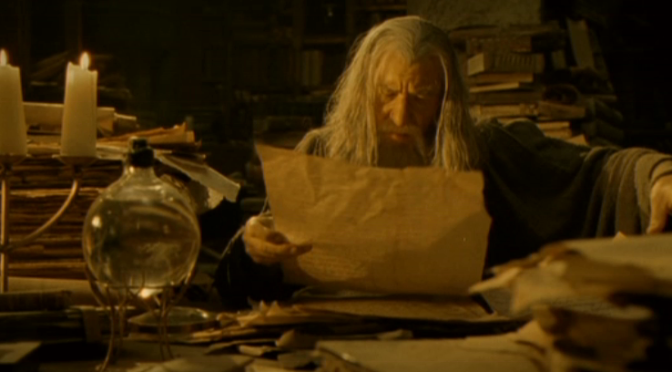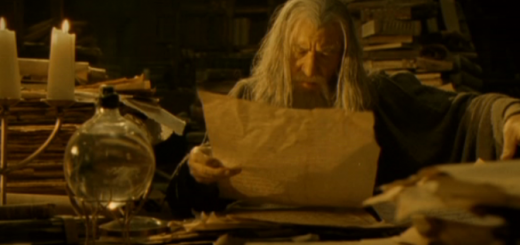Five Books From A Fantasy Library, Part 1

Libraries are one of those staples of a certain type of fantasy and horror fiction writing. Hidden away in the musty tomes and scrolls some vital, but forgotten piece of lore waits to be found. Or perhaps somewhere among the shelves, lays a wealth of esoteric knowledge or rituals that can turn the tide for the heroes of our stories.
Sadly, I know I’ve run plenty of adventures in my favorite roleplaying games and simply had to say something like “you find the wizard’s library” before cutting to the chase of what spells and story-specific text prop the players found. So I thought I’d create a running list of non-existent books for fantasy settings; as much for resources and for a personal creative exercise. I’ll try to keep them generic enough for use in most fantasy settings, but you may see some personal favorite references creep in from time to time. 🙂
If the collection gets long enough, I’ll start to organize them on their own page. Of course, the Dewey Decimal system would never do, so maybe I’ll pull inspiration from Aristotle, Alexandria or the Bibliotheca Universalis.
Social Caste Indicators of the Vhallac Era, Vol. 4: Coifs, Curls and Periwigs
Description: A modest sized folio bound in a dark green leather. All of the corners of its covers appear to have once been protected by embellished brass fixtures, but only two of these remain now. The interior parchment is in surprisingly good condition but heavily notated by some unnamed barber and the occasional fingerprint, each in a different color.
Summary: The work summarizes the use of hairstyles to indicated rank, status and profession during the Vhallac era. It includes many woodcut illustrations of these hairstyles, as well as instruments and techniques.
The Incidental Accretion of Material Incongruities in the Elemental Planes
Description: The poorly-made wooden slate cover of this volume is obviously a replacement for the original, as it does not match the back cover. Although all the pages are present, the book appears to have been violently torn down the spine and amateurishly reassembled.
Summary: The writing style of this rambling text is very difficult to follow, and the author seems to spontaneously change spellings of frequently used terms. It appears to be composed of field notes partially compiled into disjointed working theory.
The Ten Great Tragedies of Misrith Theater
Description: The front cover of this work is made of heavily layered scraps of dark lacework, arranged in such a way to suggest spider webs. The interior edges of many of the pages feature skeletons in various dancing poses still commonly practiced in courts today.
Summary: The complete lines and stage direction of ten tragedy plays along with a curiously specific diagrams that the author insists is the optimal seating arrangement of attendees for "the imparting of pathos most intense".
Sanguinolent Ailments and their Administration
Description: A work of peculiar physical dimensions, being bound on the narrowest side and having a curious notch intentionally missing from the upper right corner. The back cover bears several precisely shaped sleeves and pouches. Though empty now, the previous contents left well-defined outlines in the thick, brown leather.
Summary: This work contains a surprisingly comprehensive list of ailments both physical and mental, attributing all of them to an imbalance of the sanguine humor.
Cantrips: Vocational Magic for the Everyman
Description: This manual is flashily bound in an illustrated cover depicting persons of various walks of life performing magical acts, well beyond the scope of cantrips. Though colorful and impressive, a closer examination suggests modest quality and hurried production.
Summary: While not technically a spellbook, this work actually does present an accessible and fundamental description of the magical principles of the most innocuous common magical cantrips. Its opinion that "anyone with sufficient drive and aspiration can master the basics of magic" is perhaps a bit optimistic though.








